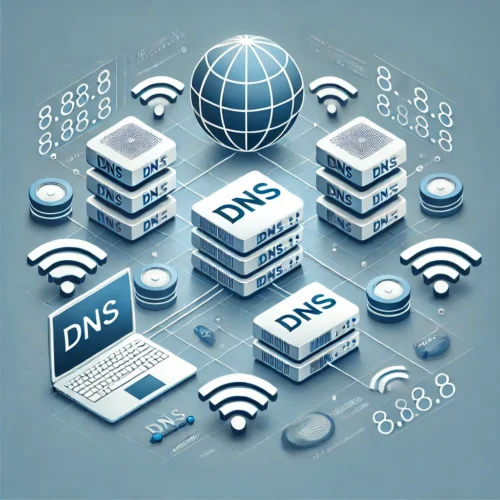
Which Industries and Businesses Benefit from VoIP Call Center Systems?
December 17, 2024How to Change DNS Servers on Different Operating Systems
DNS (Domain Name System) translates human-readable domain names (like example.com) into IP addresses that computers use to connect to the internet. By default, your ISP (Internet Service Provider) assigns DNS servers, but they may not always be the fastest or the most secure. Switching to better DNS servers can improve internet speed, security, and privacy.
In this guide, we will explain how to change DNS servers on various operating systems and recommend some of the best DNS services.

Best DNS Servers to Use
Here are the most popular and reliable DNS servers:
-
Google Public DNS
- Primary:
8.8.8.8 - Secondary:
8.8.4.4
- Primary:
-
Cloudflare DNS (Fastest and privacy-focused)
- Primary:
1.1.1.1 - Secondary:
1.0.0.1
- Primary:
-
OpenDNS (by Cisco) (Secure and customizable)
- Primary:
208.67.222.222 - Secondary:
208.67.220.220
- Primary:
-
Quad9 DNS (Focus on security by blocking malicious websites)
- Primary:
9.9.9.9 - Secondary:
149.112.112.112
- Primary:
-
Comodo Secure DNS
- Primary:
8.26.56.26 - Secondary:
8.20.247.20
- Primary:
How to Change DNS Servers on Different Operating Systems
1. Windows 10/11
- Go to Control Panel > Network and Sharing Center.
- Click on Change adapter settings on the left sidebar.
- Right-click on your active connection (Wi-Fi or Ethernet) and select Properties.
- Select Internet Protocol Version 4 (TCP/IPv4) > Click Properties.
- Check Use the following DNS server addresses.
- Enter the desired DNS servers (e.g., Google DNS:
8.8.8.8and8.8.4.4). - Click OK to save changes.
2. macOS
- Open System Preferences > Network.
- Select your active network connection and click Advanced.
- Go to the DNS tab.
- Click the + button to add a new DNS server (e.g.,
8.8.8.8and8.8.4.4). - Click OK, then Apply.
3. Android
- Go to Settings > Network & Internet > Wi-Fi.
- Long-press your connected Wi-Fi network and select Modify Network.
- Choose Advanced Options.
- Under IP Settings, select Static.
- Enter the DNS servers (e.g.,
8.8.8.8and8.8.4.4). - Save the settings.
4. iOS (iPhone/iPad)
- Open Settings > Wi-Fi.
- Tap the i icon next to your connected Wi-Fi network.
- Under DNS, select Configure DNS and choose Manual.
- Delete existing entries and add new DNS servers (e.g.,
8.8.8.8and8.8.4.4). - Tap Save.
5. Linux (Ubuntu)
- Open Settings > Network.
- Select your network connection and click the gear icon.
- Under the IPv4 tab, disable Automatic and enter your desired DNS servers.
- Click Apply to save changes.
Conclusion
Changing DNS servers can significantly enhance your internet experience. By using reliable DNS providers such as Google, Cloudflare, or Quad9, you can improve browsing speed, security, and privacy. Follow the steps above for your operating system to make the switch easily.
